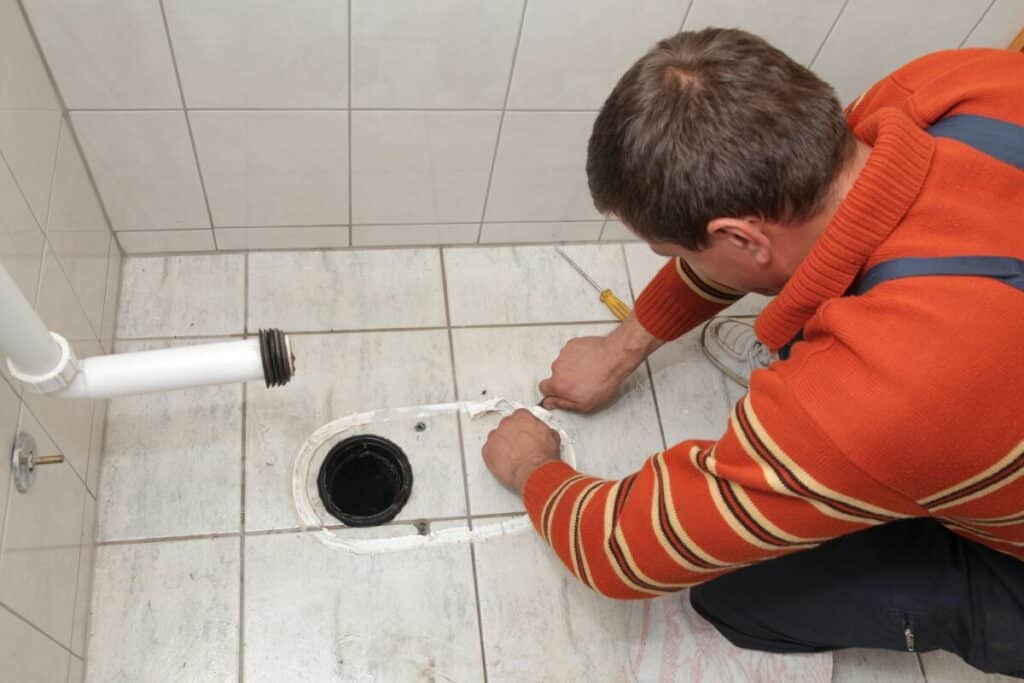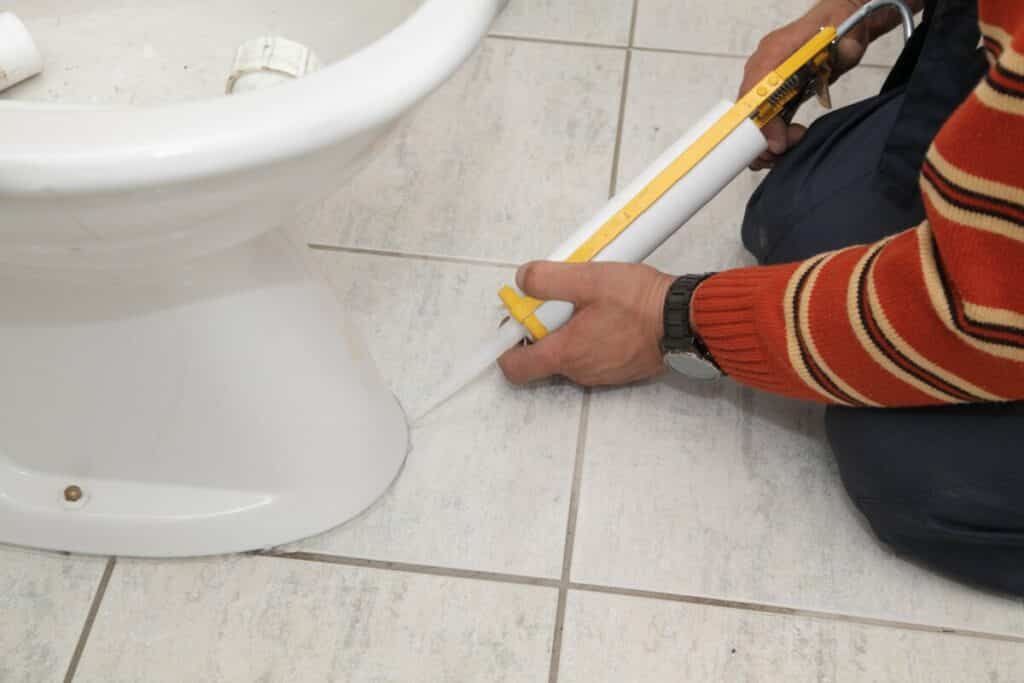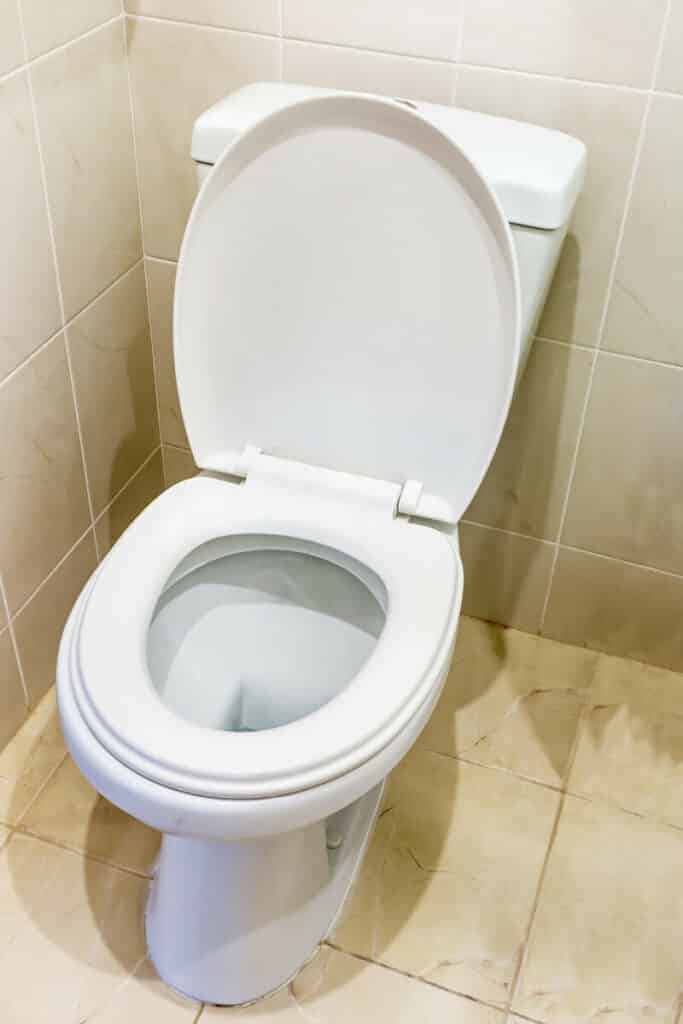Toilet Flange Above the Tile Or Flush With The Floor
Last Updated on September 19, 2022 by Alex Cubias
Plumbing is one of the most disliked jobs in building construction, and for good reason. So much can go wrong and it’s never easy to slide things together like other jobs sometimes are.
The toilet flange should sit flush against the finished surface of the floor, whether that be tile, wood, or otherwise. This is to create the best sort of seal when dealing with sewage water and waste and is one of the few things that can help keep a toilet from being wobbly.
It can be difficult to get this right and oftentimes, different plumbers will have different ideas of what this correct placing looks like. Having the knowledge and information to fix these things is the first step to correcting possible issues.

Types of Flanges
Toilet flanges are usually made up of a combination of different materials such as PVC, metal, and rubber. A flange is used to help anchor the pipe that connects to the rest of the toilet and anchors the toilet down so that it can be used properly as well as from the other points of anchoring. The type of flange might sometimes change depending on the size of the toilet or the piping itself, but generally, they stay the same.
The type of flange will also reflect what kind of other materials are used, including the rubber attachments that can sometimes make up for any sort of space that wasn’t accounted for originally. There are even entire companies that specialize in helping with these errors or when a flange is needing to be installed and how to work around the different sizing of finished flooring.
In some older housing and piping, the flange will often be entirely metal, while PVC pipe is much more common nowadays and easier to manipulate and insert into the piping of the floor. The biggest thing to remember is that doing things right with the flanges is especially important as it helps create the proper seal between the pipe and the floor for no flooding that will manage a sewage line. (Source)
Difference Between Finished Flooring and Sub-flooring
Sub-flooring is referring to usually what is a concrete base and foundation of the house. Or the base of flooring for whatever type of flooring there is, this is often times wood as well. The pipe will go down into the sewage lines and other pipes, but this part is where things get tricky. Plumbers need to finish after the finished flooring is in.
Sub-flooring is the base off of which everything else is built, and shouldn’t be where the flange and other things are installed, but rather, remains as a starting point for the rest of the plumbing, the permanent furniture fixtures, and other things that might need to be more permanently installed. (Source)
Finished flooring is usually some form of tile or even hardwood flooring. Something that can stand up to water damage usually since bathrooms are a high volume of water damage risk. Tile is usually more expected as it is easy to clean as well as easy to keep from being damaged by water damage. When the sub-floor is covered by the finished flooring, that’s when a plumber can come in and start to work on getting the appliances and other things set up.
Self-Installation or Official?

Some people like to DIY their plumbing and while this isn’t usually an issue, having a well-practiced eye and knowing what they’re doing is a huge thing, especially with plumbing. Other projects are a little bit easier to mess up and correct, whereas messing up the plumbing could screw up a lot of other things that make it difficult to finish a house or remodel without fear of breaking things.
Self-installation of a flange for a toilet is possible, though not highly recommended. In order to successfully do one, a few different tools are needed. The flange itself, PVC pipe glue, a drill both for screwing the screws in and for drilling the holes for the drills, a measuring tape to line things up, and spaces if needed to make things lay flat and even.
Official installations are much more recommended in the case of plumbing as it is usually someone who has gone through and seen a number of different ways to fix the problems that might come up and have a good idea of what to do in order to get a flange and plumbing to work the way it is supposed to.
At that point, the benefit outweighs whatever costs might come raining down. As opposed to having to pay thousands of dollars in damage that a DIYer inadvertently cost themselves with their amateur knowledge. Plumbing is one of those points that is better with the professionals.
Common Problems

Toilet flanges run a series of risks on a series of different levels. Some of the most common happen with the wax ring, the length of the toilet flange, a rocking toilet, or any sort of damage to the flange that might cause plumbing problems later on. Which includes being cracked or clogged. (Source)
As stated before, plumbing is complicated and often involves multiple upon multiple reasons for failure or disaster waiting to strike at the most inopportune moments. As the flanges are usually installed after the flooring is completely finished, this can cause a great disaster at that point. A broken wax seal will cause massive water leakage, which in turn causes some pretty bad water damage both at the sub-floor level as well as on the finished floor unless the flooring is massively waterproof.
Flanges that get damaged from a rocking toilet or in any other way also can cause leakage and without being properly installed, they can become something of a hazard to the property. The locking in of a toilet properly sometimes depends on the flange being correctly seated as a base point. If it’s not, then it’ll cause a significant and persistent headache for some time to come. Some materials may get cracked more easily than other flanges, and these are usually for older flanges. (Source)